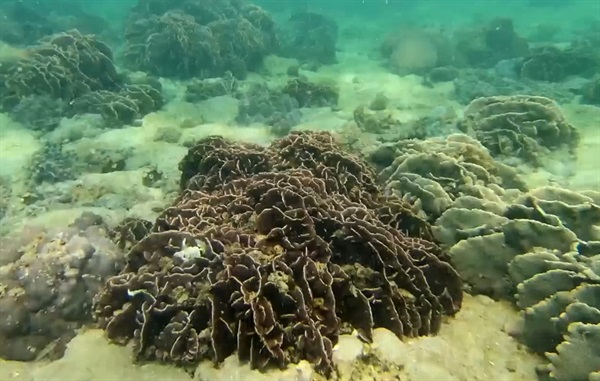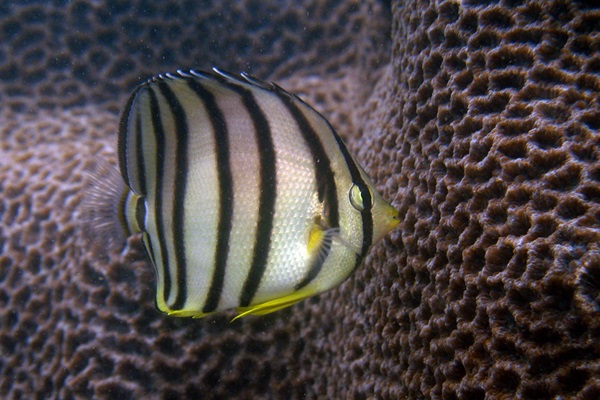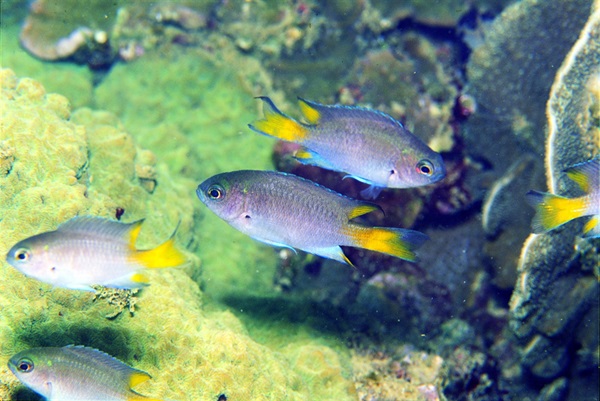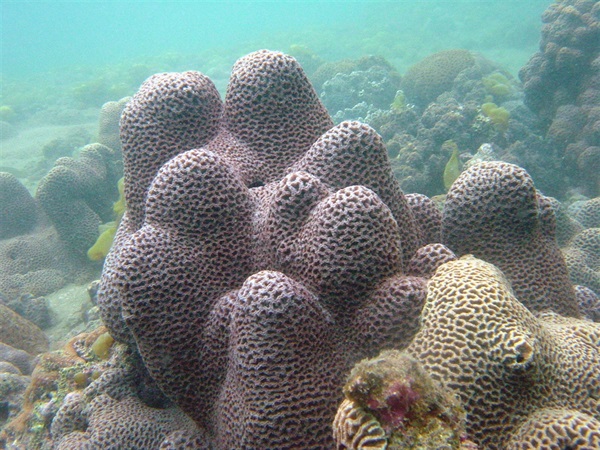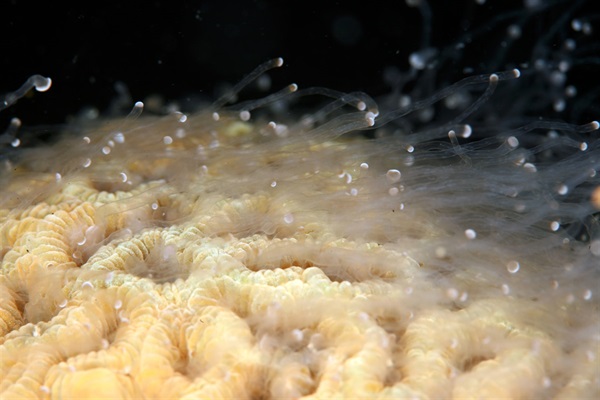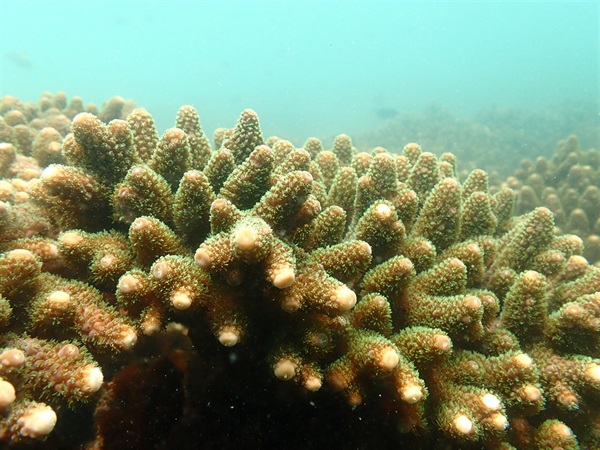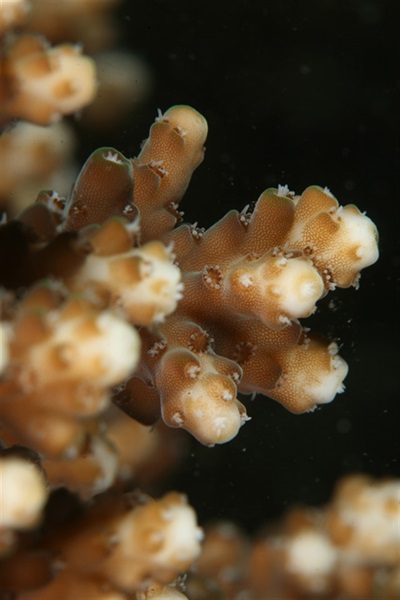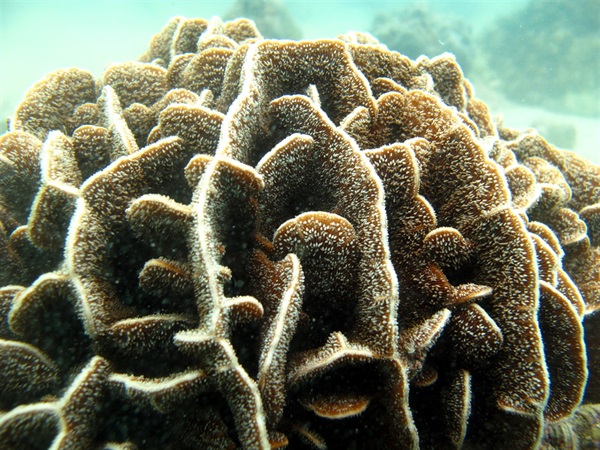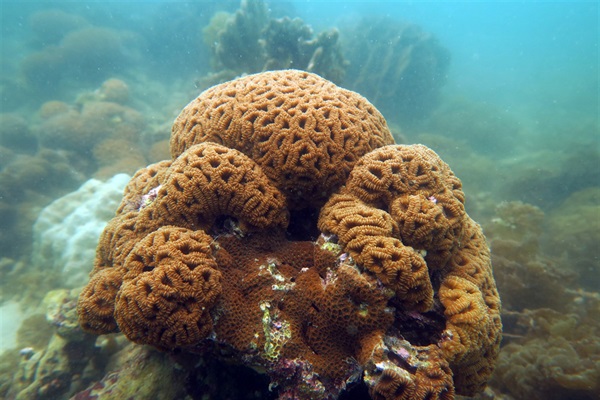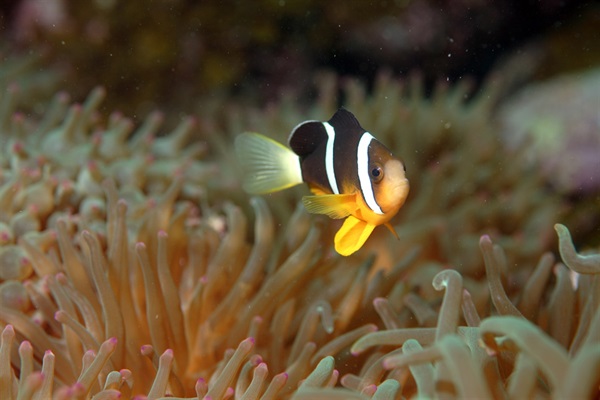Coral reef is one of the most complex and productive marine ecosystems in the world. It supports a high diversity of marine organisms ranging from unicellular protozoan to large animals like sharks, as well as large marine plants like algae. Coral reefs are always referred as tropical rain forests of the sea because they both support very high levels of species diversity together with high productivity.
In general, the growth of hard corals is closely related to its symbiotic algae (zooxanthellae). Hard corals rely on the food produced by the zooxanthellae as its major energy source, while zooxanthellae could utilise the metabolic products of the coral host. Owing to the photosynthetic nature of the symbiotic algae, distribution of coral reefs is mainly influenced by seawater temperature and light intensity. Oceanic environment (with salinity between 32 and 35 parts per thousand), warm water temperature (25–28°C), mild wave action and free from heavy sedimentation are the most optimum conditions for corals' growth. This being the case, coral reefs are mainly found in tropical and subtropical coastal shores away from the influence of major river run off, mostly on both sides of the equator up to 25° North and 25° South and in shallow waters of depth less than 30m.
Hong Kong lies at the edge of the tropical zone. Due to the influence of the Pearl River to the west, marine water around Hong Kong, especially along the western shore, is very turbid and has low salinity. Winter water temperature in Hong Kong is around 16°C or can drop to as low as 13°C. Hence, in general, Hong Kong marine environment is not optimal for many coral species to grow. Nonetheless, 84 species of hard corals (out of around 800 species worldwide) can be found in Hong Kong waters.
Corals in Hong Kong mainly grow along the northeastern and eastern shores where the waters are both sheltered and free from the influence of the Pearl River. These corals, however, do not form extensive carbonate reef system. Rather, they form communities in shallow coastal waters. Larger patches of these coral communities can be found mainly in the northeastern shores of the New Territories like Tung Ping Chau, Crescent Island and Hoi Ha Wan. In these places, corals form more extensive communities and the massive corals, especially those belonging to the family Faviidae like the brain corals (Platygyra spp.) and honey comb corals (Dipsastraea and Favites spp.) are dominant.
Large colonies of other corals, like the plate-like coral (Pavona spp.), bore corals (Porites spp.) or bowl corals (Turbinaria spp.) can also be found in the eastern region, including Sharp Island, Shelter Island, Bluff Island etc., where the coral coverages are also remarkable. Apart from the massive corals, other branching corals like Acropora spp., plate-like or laminar corals such as Montipora spp. can sometimes predominate. In the southeastern and southern parts of Hong Kong, including Ninepins, Sung Kong, Waglan, Cape D'Aguilar (Southeastern tip of Hong Kong Island), Lamma Island and Cheung Chau, both coral cover and species richness are generally low. Corals in these areas do not form extensive communities but mostly scattered on rocks and boulders.
